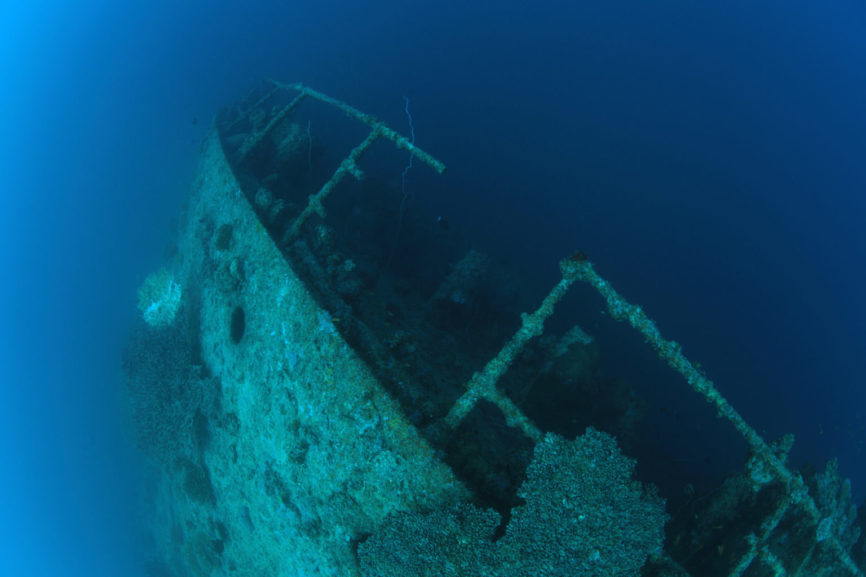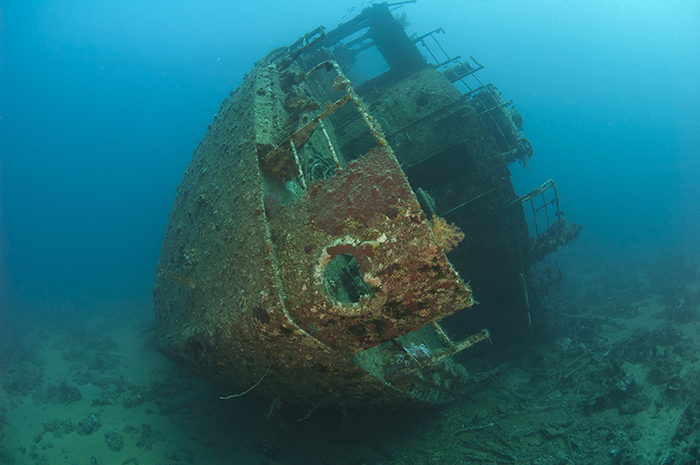When the steamship Kentucky was launched she was one of the last of a dying breed of ships, yet as she slipped beneath the waves of the Atlantic off Cape Hatteras she heralded a new age of safety on the seas.
Built in the Bath, Maine shipyards and launched in 1893, Kentucky was a 203’ wooden steamship, a rare form of construction by that time. By the end of the 19th century, almost all steamships were metal construction.
For a number of years, she plied the coastal waters of the Americas. In late 1909 the ship was purchased by the Alaska Pacific Steamship Company. The company, based in Seattle, planned to use the Kentucky to transport passengers to and from Alaska during the summer tourist season.
The Panama Canal would not open for another four years and when the Kentucky left Boston she was looking at a five-month, 17,000-mile trek that would include a passage around Cape Horn.
She never made it past Cape Hatteras.
On January 23 she sailed from New York with Captain Franz Moore of the Alaskan Pacific Steamship Company at the helm. The ship began leaking 150 miles off Sandy Hook and by manning the pumps around the clock, she made it to Newport News where repairs were made.
On February 2, inspected and now deemed seaworthy, the Kentucky steamed out of Chesapeake Bay for the open waters of the Atlantic. Two days later in heavy seas and storm conditions, 100 miles east of Cape Hatteras, the ship began to take on water.
And that is when this relic of the past became an icon of the future.
Wireless Operator W. G. (Bully) McGinnis began tapping out what was at that time a new code for a ship in distress…S.O.S.
The message was, “S. O. S. We are sinking. Our latitude is 32.10; longitude 76.30.”
The passenger steamship S.S. Alamo, en route to Galveston from New York, responded almost immediately, indicating they were on their way to give assistance.

The Alamo’s captain, fearing the worst but knowing if the crew was experienced they would have put to sea in lifeboats, ordered the ship to make full speed to the coordinates. As she approached the last reported site of the Kentucky, the Alamo’s captain ordered the engine crew to pour back smoke out of the funnels, hoping the crew of the Kentucky would see that help was on hand.
It took a half-hour more to get to the ship, and when the Alamos arrived on scene the Kentucky had not yet slipped beneath the sea, although its fate was just a matter of time and not much more at that.
According to Captain Moore, as the seas built the repairs done at Newport News quickly failed, flooding the engines and radio room as the S.O.S. was sent. The electricity failed as the smoke from the Alamo came into view. Without power, there was no way to pump the seawater from the ship and when the Alamo arrived she was riding low in the water with waves washing over the deck.
It was at 3:30 when, according to wireless operator McGinnis, as told to the New York Times, that the message they had been hoping for came from the Alamo.
“Are you a white vessel?” was the message. The answer was yes and the response was, “We’ll be with you in a jiffy.”
For the next 90 minutes the 46 man crew of the Kentucky were evacuated in small boats to the Alamo, and by 5:00 p.m. all crew members were accounted for and safe.
The only casualty McGinnis told the Times was a rooster.
“Every living thing but a big red rooster was saved,” he said. “He was on top of the pilothouse crowing to beat the band as the boatload of us made off for the welcoming sides of the…liner.”

The Alamo continued on its journey, dropping the crew of the Kentucky off in Key West.
Interestingly, the Alamo was not the only ship to respond. According to a number of news reports of the incident, the US Navy dispatched the USS Louisiana and two revenue cutters to the scene, but called off the rescue attempt when the Alamo reported they were on site.
What makes the Kentucky S.O.S. so significant is that as far as anyone can tell, it was the first time the international distress signal led directly to a rescue at sea. It had been used before February 4, 1910 to come to the aid of ships that had grounded or crews that were in distress but onshore. This, however, seems to be the first time a ship helped another ship as it was sinking.
